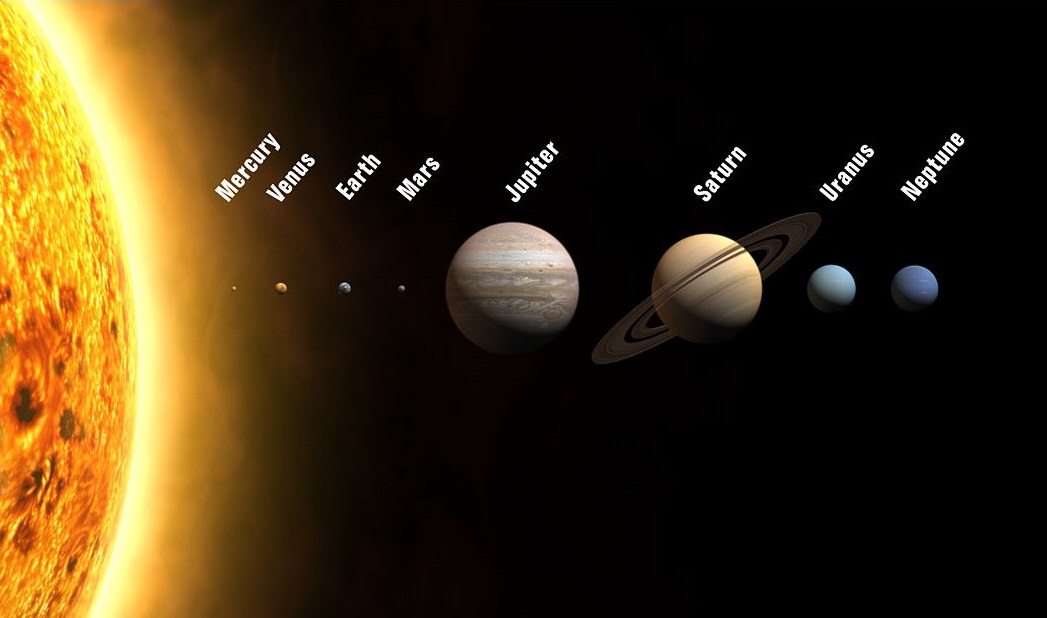We study the solar system and make models of it from childhood. But there are many facts that most people don’t know about our solar system. Over the years as more and more objects in the solar system are studied with more accuracy we get a clearer picture of the solar system we live in. We’ve even been finding possibilities of water and life out there in the solar system where we never thought life could exist. As out technical capabilities improve we’ll keep learning more about the solar system. For the time being here are the top 10 interesting facts about the solar system.

The sun is the heart of the solar system; literally. It contains 99% of the mass of the solar system. Most of the rest of the mass is contained by Jupiter, the largest planet in the solar system. Everything else, including earth and the other planets, their moons, asteroids, dwarf planets etc. are a miniscule part of the solar system in terms of mass.
A lot of people think that because Mercury is nearest to the sun it must be the hottest planet in the solar system but that’s not true. Mercury has no atmosphere which makes it really easy for Mercury to lose heat back to space. The hottest planet in fact is Venus because it has a very thick atmosphere which traps in all the heat and doesn’t let it escape to space.
Everybody knows about Saturn’s rings of ice and dust because they are clearly visible from earth. Some people also know that Uranus has rings too and that they are on a vertical axis which makes it feel as if Uranus fell over onto its side. But the truth is that Neptune and Jupiter too have rings. We just can’t see them easily because of their thinness and darkness.
Apart from the planets and satellites there are millions of objects in our solar system. A lot of these objects have not even been observed yet. One group of such objects is known as the Dwarf Planets. These are too small to be called planets and too large to be called asteroids. There are thousands of dwarf planet sized objects but only 5 are recognized as dwarf planets yet. These are; Ceres, Pluto, Haumea, Makemake and Eris.
Apart from dwarf planets there are also a group of bodies known as the minor planets. These are objects that are in direct orbit of the sun but are neither a dominant planet nor have been classified as a comet. Dwarf planets can also be said to be a type of minor planets along with asteroids, Trojans, Centaurs, Kuiper Belt and Trans Neptunian Objects.
From science fiction movies we get the feeling that the asteroid belt is a dangerous place for a space ship and it will be hard to cross the asteroid belt. While it is true that the asteroid belt might contain millions of objects, it is so sparsely populated that it will not be difficult to cross it in a space ship without ever coming dangerously close to any asteroid.
One of Saturn’s moons, Enceladus has a volcano that erupts plumes of water and ice. The gravitational pull of Saturn stretches and compresses Enceladus, causing its core to heat up. This heat is released in the form of eruptions some of which become part of Saturn’s rings and other fall down on Enceladus’ surface in the form of snow. This shows that there is liquid water just below the surface of Enceladus.
Jupiter is the largest planet in the solar system. It is said that its gravity acts as a vacuum cleaner in the solar system and it picks up space debris in its orbit. Another interesting fact is that Jupiter has 67 recognized moons. This is just another effect of its strong gravitational field.
The sun also has an atmosphere. It releases a continuous stream of charged particles known as the solar wind along with light heat and other radiations. This is known as Heliosphere which stretches out to about 100 AU where the solar wind meets the interstellar wind. This tenuous atmosphere contains most of the solar system within itself.
Since we live inside the Sun’s atmosphere we are constantly bombarded by radiation and the solar wind tries to strip off earth’s atmosphere. If this were to happen we wouldn’t have an atmosphere to support life. This doesn’t happen because the earth’s magnetic field protects us from the solar wind by deflecting it off. This phenomenon can be observed near the poles in the form of Aurora.
Source topyaps.com
 World Insights Bringing You best of world at one place
World Insights Bringing You best of world at one place








